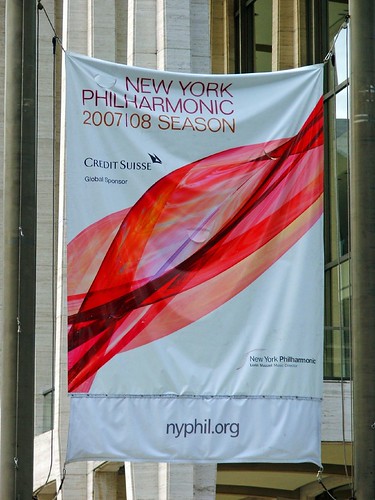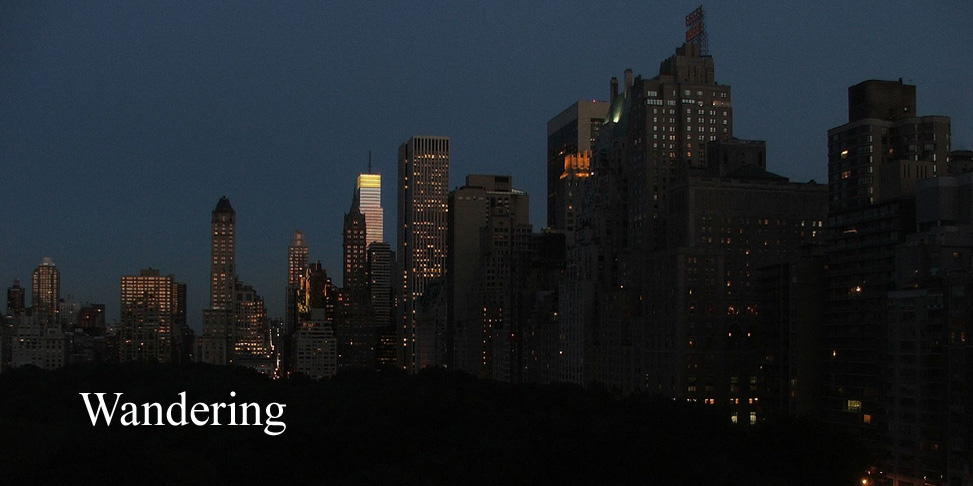
On Friday 2 November, I returned to Avery Fisher Hall and the New York Philharmonic.
The conductor was Semyon Bychokov and the soloists in the Martinu concerto for two pianos and orchestra were Katia and Marielle Labeque last heard in Sydney long ago. ( Marielle is married to Mr. Bychkov. )
The first work was Metaboles by the French composer Henri Dutilleux (born 1916). I hadn’t heard of M. Dutilleux and this work was new to me. It is only about 17 minutes long and has five movements played without pause. It was pleasant enough if not particularly memorable. It’s origins may be more complex than I realized as the composer explains in a note:
“In ancient Greek music (Metaboles) was given to a passage connecting the conjunct system to the disjunct system (or vice-versa).”
Sadly insufficient time remains to me; I will never know what this means.
The work has a long history of performance here. It was composed for the 40th. anniversary of The Cleveland Orchestra in 1965 and dedicated to George Szell. Charles Dutoit conducted the premiere at the Philharmonic in 1988 and it was heard most recently here in 2001.
(Trivia note: while looking at the photos of artists at Carnegie Hall on Sunday I noticed that George Szell signed his picture in 1970 only shortly before his death.)
(Second Trivia note: I know the year of George Szell’s death as it occurred shortly before the 1970 Edinburgh Festival (which I attended) where he was due to appear.)
The program notes: “The work’s first four movements successively spotlight the woodwinds, strings, brass and percussion, with the full orchestra operating with greater equality in the fifth movement”. In the first movement the woodwinds returned to the aviary heard the week before in Night’s Blackbird.
Next came the Martinu concerto for two pianos which is a lively and enjoyable piece. The first movement had jazz elements and also reminded me of Poulenc. The second movement opened with the pianos alone playing music which had echoes of the beginning of Saint-Saens Second concerto . The last may have been inspired by something by Ibert . So the whole thing was like a pleasant tour of 20th century French music to me. The reviews say that the piano parts are fiendishly difficult, one suggests too difficult, but the Labeque sisters played them with great skill and vigour. I would like to hear this work again, it may be a bit derivative but it’s a happy piece. It has been neglected, or perhaps lost in Martinu’s prolific output, and I can only find one CD in print.
The second half of the concert was Rachmaninoff’s Second Symphony played without cuts (which the program note says are common). I went to the open rehearsal of this concert and was prepared to write that this performance was far too loud. But at the concert in a seat much closer to the orchestra it did not sound that way at all. Instead I could hear all the string parts, even the violas, distinctly and enjoyed the symphony more than ever before. I am sure the acoustics in Avery Fisher Hall are variable and the closer to the front the better.
As and example of poor listening in the past, I had not previously noticed the clarinet solo at the start of the third movement: so I timed it this time. It runs for two minutes and a quarter. Clarinetists please note.
Blogs about music should contain personal anecdotes and gossip. I am therefore happy to report that at the open rehearsal of this concert I ran into (or found myself sitting near)
Pascal Roget and Ami Hakuno. I accosted them and mentioned I had enjoyed their performances at AFCM at Townsville. Ms. Hakuno seemed astonished that audience members wandered from place to place and at the coincidence. They live in New York and had come to the rehearsal as they are friends of the Labeques.





No comments:
Post a Comment